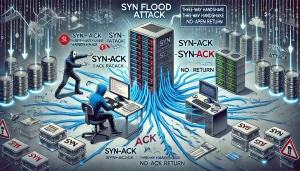What commonly motivates cybercriminals to attack networks as compared to hacktivists or state-sponsored hackers?
- fame seeking
- financial gain
- political reasons
- status among peers
Motivations Behind Cyberattacks: Cybercriminals, Hacktivists, and State-Sponsored Hackers
Cyberattacks have become a defining challenge of the digital age, with attackers varying widely in their motivations and goals. Understanding what drives these actors is crucial for formulating defenses and countermeasures. While cybercriminals, hacktivists, and state-sponsored hackers all engage in similar technical activities, their objectives differ significantly. This article will explore the commonly observed motivations—fame seeking, financial gain, political reasons, and status among peers—with a detailed examination of real-world case studies for each category.
1. Fame Seeking
Fame seekers are often individual hackers or small groups who are motivated by the desire to gain recognition for their technical skills. They may carry out audacious attacks or exploit high-profile systems to garner public attention or personal notoriety. For fame seekers, the primary goal is not financial reward or political change but acknowledgment from peers, the media, or even society at large.
Real-World Example: Gary McKinnon (2001–2002)
Gary McKinnon, a British systems administrator, gained international attention for hacking into 97 U.S. military and NASA systems over 13 months. McKinnon claimed to be searching for evidence of UFOs and free energy technology, but the attack’s impact—shutting down critical defense networks—earned him widespread notoriety. While his stated motivation was curiosity, the fame he gained was undeniable, turning him into a controversial figure. His actions drew significant media attention, and his extradition case became a political flashpoint.
Impact of Fame-Seeking Attacks
Though fame-seeking attacks may not aim to cause financial or political damage, they often expose vulnerabilities in critical systems. These attacks can serve as a wake-up call for organizations to enhance their cybersecurity measures. However, they also risk inspiring copycat actions, perpetuating cycles of disruptive hacking.
2. Financial Gain
Financial gain is the most common motivation for cybercriminals. These attackers operate in a highly organized manner, often leveraging dark web markets to profit from stolen data, ransomware payments, or fraudulent transactions. Financially motivated attacks target a wide range of victims, from individuals to multinational corporations.

Real-World Example: WannaCry Ransomware Attack (2017)
The WannaCry ransomware attack exploited a vulnerability in Microsoft Windows systems, encrypting data on infected machines and demanding Bitcoin payments for decryption keys. The attack spread rapidly across 150 countries, affecting hospitals, government agencies, and businesses. The National Health Service (NHS) in the UK was one of the hardest-hit victims, with critical operations delayed and patient data compromised. While the financial gain for attackers was modest relative to the scale of the attack, it highlighted the devastating potential of ransomware as a profit-driven cyberweapon.
Real-World Example: Target Data Breach (2013)
In 2013, cybercriminals infiltrated Target’s point-of-sale systems, stealing credit and debit card information from 40 million customers. They also exfiltrated personal data, such as names and email addresses, from an additional 70 million individuals. This information was sold on the dark web, generating significant profits for the attackers. The breach cost Target over $200 million in lawsuits and remediation efforts, underscoring the financial impact of such attacks.
Why Financial Gain Is a Common Motivation
The rise of cryptocurrencies has made it easier for cybercriminals to demand and receive payments anonymously. Additionally, the proliferation of ransomware-as-a-service (RaaS) platforms has lowered the technical barrier for entry, enabling even amateur hackers to profit from cybercrime. This economic model has led to a surge in financially motivated attacks, making it the dominant threat to organizations worldwide.
3. Political Reasons
Political motivations drive hacktivists and state-sponsored hackers. Hacktivists seek to promote a cause or ideology, often targeting organizations they perceive as unjust or unethical. State-sponsored hackers, on the other hand, operate with geopolitical objectives, such as disrupting adversaries’ operations or gathering intelligence.
Real-World Example: Anonymous vs. Church of Scientology (2008)
The hacktivist collective Anonymous launched “Project Chanology” in response to the Church of Scientology’s attempt to suppress a leaked video of Tom Cruise discussing Scientology. Anonymous conducted distributed denial-of-service (DDoS) attacks, prank calls, and email spamming campaigns to disrupt the church’s operations. The campaign aimed to expose what Anonymous considered oppressive practices by the organization. While the attacks were not financially motivated, they effectively raised awareness of Anonymous’s agenda and embarrassed the church.
Real-World Example: Stuxnet (2010)
Stuxnet represents a politically motivated attack believed to have been orchestrated by the United States and Israel. This highly sophisticated worm targeted Iran’s nuclear enrichment facilities, specifically its centrifuges. By causing the centrifuges to malfunction while appearing to operate normally, Stuxnet delayed Iran’s nuclear program without direct military intervention. This case demonstrates how state-sponsored attacks can achieve political and strategic objectives with minimal risk of physical conflict.
The Role of Ideology in Cyberattacks
Politically motivated hackers often justify their actions as serving a higher cause. For hacktivists, this might be social justice, environmentalism, or anti-corporate sentiment. For state actors, the motivation often lies in asserting dominance, disrupting adversaries, or gathering intelligence. These attacks can have far-reaching consequences, including escalating tensions between nations.
4. Status Among Peers
Hackers seeking status aim to earn respect and recognition within underground communities. These actors often engage in high-profile or technically challenging attacks to demonstrate their skills and secure their reputation. While financial gain or fame may be secondary motivations, the primary goal is to enhance their standing among peers.
Real-World Example: Lizard Squad (2014)
Lizard Squad, a hacking group, gained notoriety for disrupting PlayStation Network and Xbox Live services during Christmas 2014 using DDoS attacks. The group’s actions were primarily driven by a desire for recognition within the hacking community. They boasted about their exploits on social media, taunting companies and users alike. While their attacks caused significant inconvenience, they were not financially motivated but rather aimed at asserting dominance in the hacker subculture.
Impact on Underground Communities
The quest for status can lead to the creation of new hacking tools and techniques, which are then shared within the community. This dynamic contributes to the rapid evolution of cyber threats, as other hackers adopt and build upon these innovations. However, the pursuit of status also makes these actors more visible, increasing the likelihood of their identification and prosecution.
Comparative Analysis of Motivations
The motivations behind cyberattacks vary widely depending on the actor’s goals and context:
| Motivation | Primary Actors | Example | Impact |
|---|---|---|---|
| Fame Seeking | Individual hackers | Gary McKinnon’s NASA hacks | Exposes vulnerabilities; inspires copycats. |
| Financial Gain | Cybercriminals | WannaCry ransomware, Target data breach | Causes significant financial and reputational damage. |
| Political Reasons | Hacktivists, State actors | Anonymous vs. Scientology, Stuxnet | Influences public opinion; escalates geopolitical tensions. |
| Status Among Peers | Underground communities | Lizard Squad’s gaming network attacks | Drives innovation in hacking tools; increases visibility. |
Conclusion
Understanding the motivations behind cyberattacks is critical for developing effective defense strategies. Financial gain remains the most common driver for cybercriminals, given the lucrative opportunities presented by stolen data and ransomware. Fame seekers and those pursuing status often target high-profile systems to gain recognition, while politically motivated actors use cyberattacks as tools for activism or geopolitical leverage. By recognizing the diverse motivations behind these threats, organizations and governments can better anticipate and counteract cyberattacks, protecting both their systems and the broader digital ecosystem.


